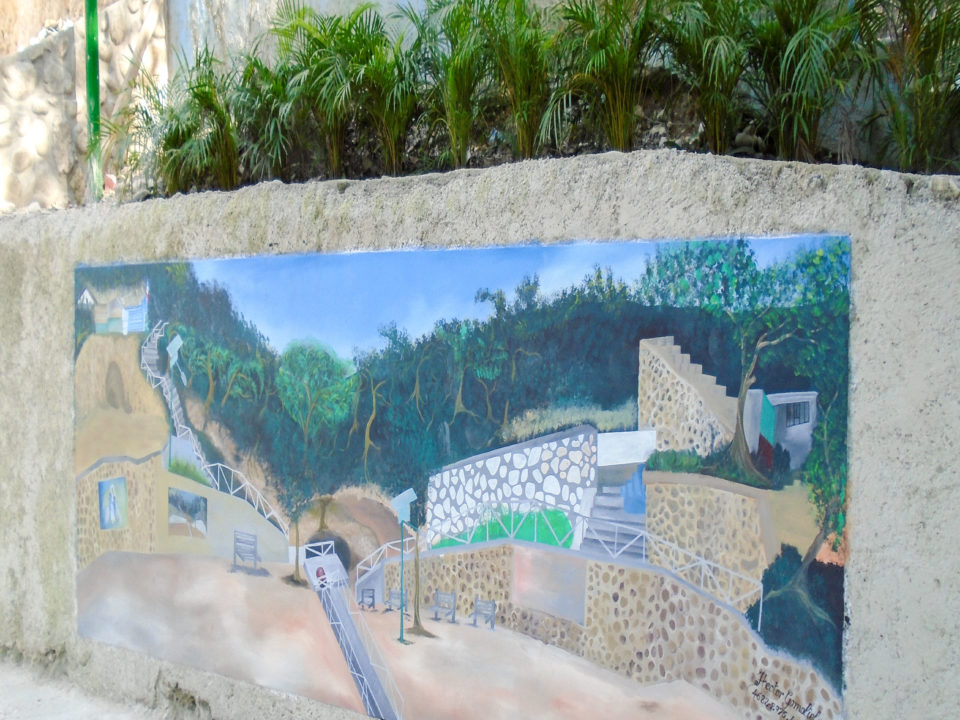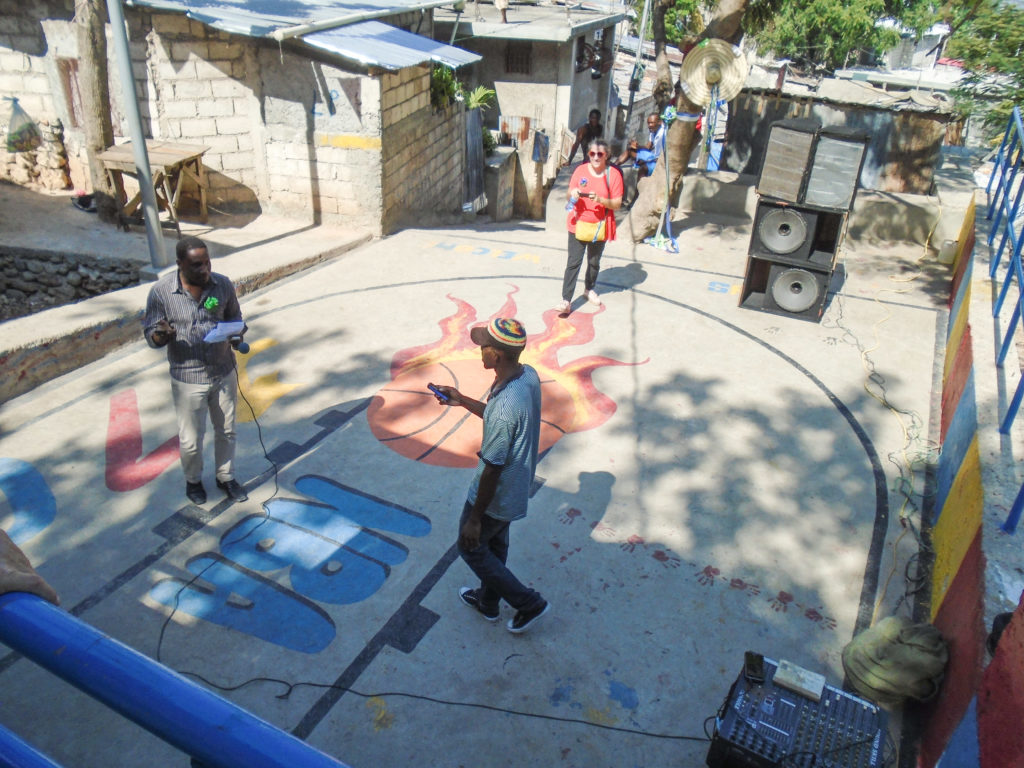 Stories
Stories
July 3, 2018 • 4 min read
The most important element of this project, and one of the reasons for its huge success, was the high level of community involvement. As a community-led process, local residents were heavily involved in the process from the very beginning, identifying vulnerable areas and coming up with specific solutions.

In the early evening of January 12th, 2010, disaster struck Haiti, already one of the world’s poorest countries. In just 7 seconds, almost 300,000 people died or received fatal injuries, and 1.5 million people were left homeless. In the wake of the earthquake, informal settlements appeared from the rubble of old, destroyed neighbourhoods, many of which lacked basic amenities such as water and sanitation facilities. The temporary nature of these neighbourhoods meant that they were ill-prepared to resist and to recover from future shocks. As Haiti is one of the world’s most vulnerable countries when it comes to natural disasters, even just a heavy rain can cause destruction, washing away homes, gardens, animals and even claiming lives.
GOAL has been on the ground providing aid in Haiti since the immediate aftermath of the earthquake. After years implementing emergency response- shelter and housing, and risk mitigation projects, in the same area, GOAL was willing to take its action a step further, working to improve the living conditions for the populations and reducing their exposure to hazards. In 2014, GOAL began a resilience programme financed by the EU (under their PARAQ programme) called Menm Katye, Lot Vizaj, with the aim of improving the living conditions and the urban environment of the informal Port-au-Prince neighbourhoods of Haut-Turgneau and Debussy. Being prepared for a crisis is an important part of any community structure, and a central aim of the MKLV programme was building the capacity of Haitians to respond to natural disasters. This involved both raising awareness among communities and constructing more resilient homes and community infrastructure. GOAL held workshops and trainings for local community volunteers, creating six Community Emergency Intervention Teams who were trained in specific skills important to their communities, such as how to identify risks and vulnerabilities, how to prepare their neighbourhoods for potential disasters, and how to conduct emergency evacuations. Simple facts such as knowing the locations of temporary evacuation shelters could save many lives when natural disaster strikes.
To mitigate future disaster risks, community-led groups constructed evacuation stairs, footbridges, paved evacuation routes, retaining walls, and drainage canals. This was aimed at both reducing the harmful effects of natural disasters and providing the communities with escape routes out of their neighbourhoods, many of which have very limited accessibility. The centrepiece of this programme was the design and building of 4 large structuring works that aimed at transforming the conditions of circulation and the safety in 4 informal blocks populated by 10,000 inhabitants.
* The design of these works took in account a lot of input from the community and thorough studies were led to confirm the prospective impact of the works. In total the works lead to the following realisations: 850 m of pedestrian roads and stairs in steep, hard to access settlements
* 8 pedestrian bridges connecting neighbourhoods previously bisected by ravines
* 4 fully equipped public spaces in previously cramped areas
* 150 Households living in the vicinity of ravines protected from flooding by 1000 m3 of retaining walls
* 500 m2 of natural areas protected and rejuvenated by tree planting.
Through this programme, GOAL also helped to improve the living conditions for many Port-au-Prince families, by providing 5000 USD grants to families building a new home, and 2000 USD to families reinforcing their dwellings. 85 households in these neighbourhoods availed of this scheme. Other initiatives carried out under the PARAQ programme were aimed at providing the local communities with public recreational spaces, involving both local residents and artists associations. The project also saw the establishment of 6 waste collection groups, the construction of 3 blocks of toilets in neighbourhood schools, and the “naming” of 35 neighbourhood streets, among many other initiatives.
The programme ended on 4 December 2017 after 40 months and is recognised as being a great success. Though the initiatives and management of the public amenities have been officially handed over from GOAL to the local communities, the knowledge and skills learnt over the duration of the programme means that Haitians can continue improving the safety of their communities. The Community Emergency Intervention Teams continue to serve over 1500 people in high-risk communities in Port-au-Prince. The most important element of this project, and one of the reasons for its huge success, was the high level of community involvement. As a community-led process, local residents were heavily involved in the process from the very beginning, identifying vulnerable areas and coming up with specific solutions. Around 600 local workers took part in construction and awareness projects over the duration of the programme, gaining important skills and knowledge that can be passed on to future generations, guaranteeing the future safety of their communities. Now, residents of the once-informal neighbourhoods of Haut-Turgneau and Debussy live in much safer places and are more equipped to get out of harm’s way when the heavy rains begin.

